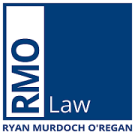RMO is recognised as one of Logan City’s Top 3 Traffic Lawyers for 2025. Thank you to our clients for your trust and support. 1800 999 529 mail@rmolaw.com.au rmolaw.com.au/practice-areas/traffic-law/...
News
Other News
Tree Dispute
Following on from our previous newsletter, one of the most common disagreements between neighbours are about trees.
These disputes can happen in several ways, because branches might:
1. overhang your dividing fence;
2. fall into your property; or
3. block the sun so your ability to generate electricity from your solar panels is affected.
Sometimes the roots from those trees can also cause damage to your property.
It is always recommended that you talk things through with your neighbour in an attempt to resolve the issues.
Knowing where you stand will help you in trying to get a resolution without having to go to Court.
Firstly, you need to know who is considered to be the tree-keeper. In most situations the Neighbourhood Disputes Resolutions Act 2011 (the “Act”) applies. The tree-keeper is generally the registered owner of the land that the tree is on. This can be a person, a company, body corporate etc.
If a tree is located on rural land, or on land that is more than 4 hectares in size, or owned by a local government that is used as a public park, and in limited other situations, then the Act does not apply.
Even if the Act does not apply, you have a right to have common law to abate any nuisance. This means that if a branch is overhanging on your property or a root of a tree is intruding your boundary line, you have the right to remove them. It is your decision what you do with the branches, roots or fruit that was intruding on your property. That is, you can either put it back onto the neighbour’s property or keep it or dispose of it yourself.
If it is too costly for you to abate the nuisance, and you cannot reach an agreement with your neighbour, you can give them a Formal Notice under the Act (“the Notice”) to remove particular overhanging branches.
This is generally where the branches are more than 2 ½ meters off ground and overhang more than 50cm.
The Notice requires certain information to be included. If your neighbour does not remove the branch in accordance with the Notice, you can remove the branches yourself or have a contractor do this on your behalf and pass on the expense to the neighbour.
Please note though that the Act only makes your neighbour liable for up to $300.00 a year, so if it is more costly to remove the branch, you can ask QCAT for assistance. If the Act does not apply, you can apply to the Magistrates Court for an order.
The tree needs to be considered as “affecting you” or be “substantially interfering”. This means that if, in the next year, the tree is likely to
• seriously injure anyone on your land; or
• seriously damage your land or your property; or
• unreasonably get in the way of your enjoyment of the land;
• then the tree is affecting you/ causing substantial interference.
The last situation is mostly important for solar panels, satellite or TV reception, or for example obstructing your view. Please note that normal tree litter (small tree parts such as flowers, roots etc) are not classified as a substantial interference.
If you are required to go to QCAT, please note that QCAT has many matters before it and currently, QCAT has indicated that tree disputes are generally finalised within 55 weeks on average.
If you require our assistance with your tree dispute, please do not hesitate to contact us.
Get in Touch

